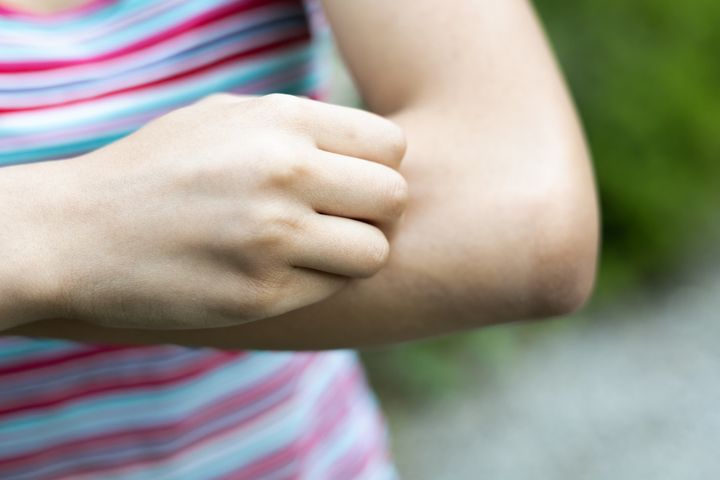
Brits are being warned to ‘stay safe’ amid a rise in a rare disease in the UK.
Yup, just when we were excited about spring, it turns out that we’re now more at risk of developing lyme disease.
The disease is caused by a type of bacteria that is present in many animals, including mice, deer and pheasants. If a tick bites one of these animals, it becomes infected and can pass the bacterial infection on to humans by biting them.
Around 10% of ticks in the UK carry the infection, the ECHO reports.
And although the UK Government estimates there are around 3,000 to 4,000 cases of Lyme disease in humans in England and Wales every year, the real numbers could be much higher according to research from 2019.
The true number of cases across all countries is thought to be much higher because there is no requirement to notify cases to local authorities.
Lyme Disease Symptoms
The main symptom is a bull’s eye rash, however not all people will experience this which can make diagnosis tricky. Other early symptoms include aching joints and muscles, plus a stiff neck and fever.
- A circular or oval shape rash around a tick bite can be an early symptom of Lyme disease in some people.
- The rash can appear up to 3 months after being bitten by an infected tick, but usually appears within 1 to 4 weeks. It can last for several weeks.
- The rash can have a darker or lighter area in the centre and might gradually spread. It’s not usually hot or itchy.
- The rash may be flat, or slightly raised, and look pink, red, or purple when it appears on white skin. It can be harder to see the rash on brown and black skin and it may look like a bruise.
If the condition is left untreated, symptoms can progress to numbness of the limbs and temporary paralysis of your facial muscles. In rare cases, Lyme disease can lead to inflammation of the heart muscles, which can cause the heart to beat irregularly.
How to avoid being bitten by a tick
Lyme Disease UK is urging people to be vigilant against ticks and to take the followingn measures to avoid being bitten:
Carry a tick removal tool with you at all times, if possible.
- Use a repellent when engaging in outdoor activities. Choose one that repels ticks, mosquitoes and other biting insects.
- Although ticks have been found in urban parks and gardens, it’s wise to take extra precaution in long grass, leaf litter and in wooded areas. When hiking or doing other outdoor activities, try and stick to pathways where there tends to be less long grass.
- Wear a long-sleeved top and tuck trousers into socks to reduce skin exposure. Light-coloured clothing may enable you to see ticks more easily.
- If you are taking part in a high risk activity, it is possible to buy pre-treated clothing from camping or hunting shops that has been sprayed with the repellent permethrin or you can spray clothing and shoes with this product yourself (do not spray directly on skin and be aware that it is toxic to cats).
- Check yourself, your children and your pets regularly for ticks when out and about and brush off any that are unattached. If you see an embedded tick, remove it as quickly as possible using the correct tick removal technique.
- If you are unable to remove the tick successfully, visit a doctor immediately, even if it means going to A&E.
- Have a shower when you get home and check yourself thoroughly for ticks.
- Also check any people or pets who were out and about with you and if bitten, put all clothes in the tumble dryer on the highest heat possible or wash your clothes at a high temperature.
How to remove a tick
According to the NHS, to remove a tick safely:
- Use fine-tipped tweezers or a tick-removal tool. You can buy these from some pharmacies, vets and pet shops.
- Grasp the tick as close to the skin as possible.
- Slowly pull upwards, taking care not to squeeze or crush the tick. Dispose of it when you have removed it.
- Clean the bite with antiseptic or soap and water.
The chance of getting ill is low. You do not need to do anything else unless you notice a rash or become unwell.
Treatment for Lyme disease
Oral antibiotics are the most common treatment used for Lyme disease. In severe cases, antibiotic injections are sometimes used.
The good news is that if Lyme disease is spotted early, treatment can be effective.